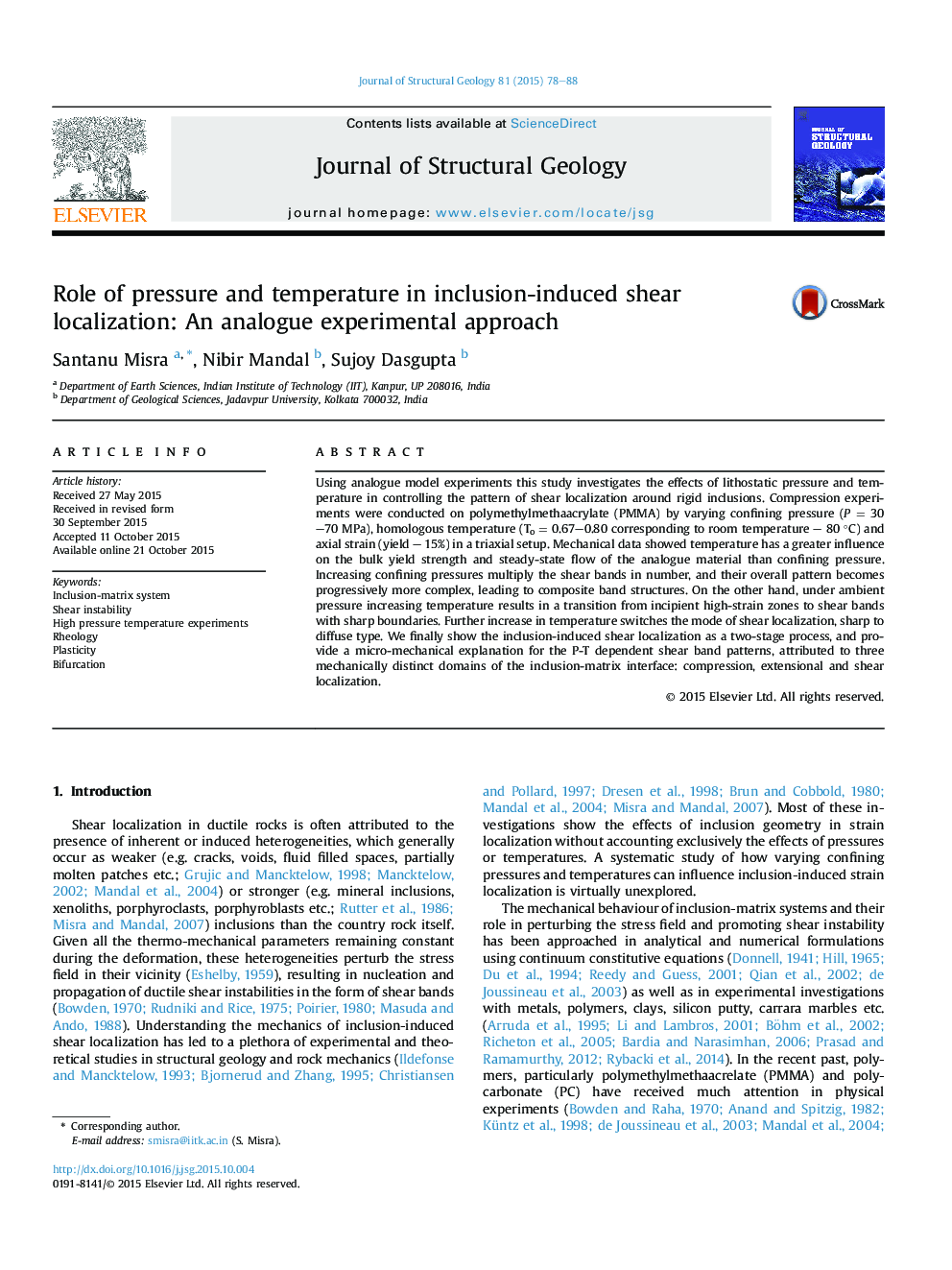| Article ID | Journal | Published Year | Pages | File Type |
|---|---|---|---|---|
| 4732921 | Journal of Structural Geology | 2015 | 11 Pages |
•Strength of inclusion-free models is higher to that of models with inclusion.•The inclusions trigger deformation localization at their interface.•Temperature has greater influence in strength and shear localization than pressure.•Increasing T and P promote diffused and sharp localization, respectively.
Using analogue model experiments this study investigates the effects of lithostatic pressure and temperature in controlling the pattern of shear localization around rigid inclusions. Compression experiments were conducted on polymethylmethaacrylate (PMMA) by varying confining pressure (P = 30–70 MPa), homologous temperature (To = 0.67–0.80 corresponding to room temperature – 80 °C) and axial strain (yield – 15%) in a triaxial setup. Mechanical data showed temperature has a greater influence on the bulk yield strength and steady-state flow of the analogue material than confining pressure. Increasing confining pressures multiply the shear bands in number, and their overall pattern becomes progressively more complex, leading to composite band structures. On the other hand, under ambient pressure increasing temperature results in a transition from incipient high-strain zones to shear bands with sharp boundaries. Further increase in temperature switches the mode of shear localization, sharp to diffuse type. We finally show the inclusion-induced shear localization as a two-stage process, and provide a micro-mechanical explanation for the P-T dependent shear band patterns, attributed to three mechanically distinct domains of the inclusion-matrix interface: compression, extensional and shear localization.
Graphical abstractFigure optionsDownload full-size imageDownload high-quality image (385 K)Download as PowerPoint slide
